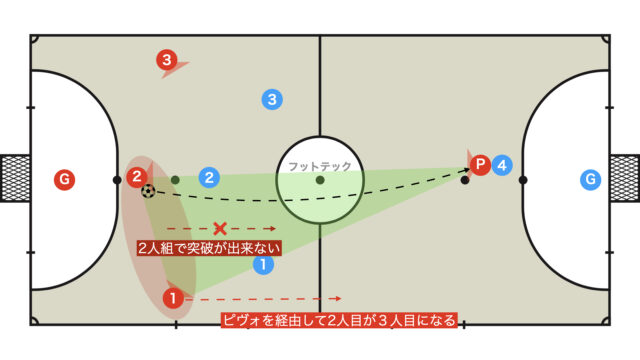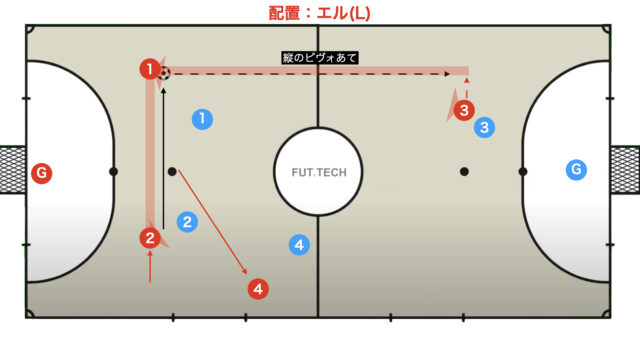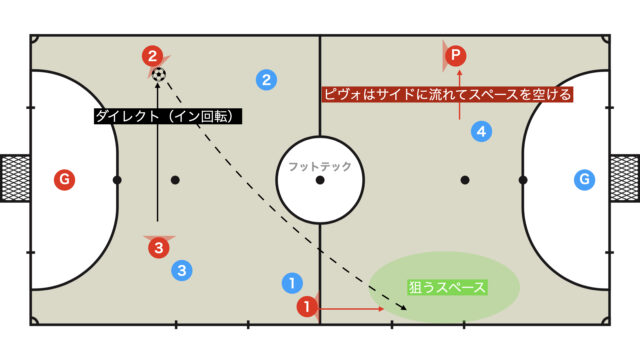When playing futsal, you often hear the term “sai,” but many might be at a loss if asked, “Explain sai.”
In fact, it seems that quite a few people end up using the term “sai” incorrectly.
To put it simply, “sai” means “move aside, you’re in the way” in Portuguese, and it is used to convey the nuance of telling other players, “move, you’re in the way.”
However, in Japan, it is extremely rare for “sai” to be used in the sense of “move aside, you’re in the way”; rather, in Japan, “sai” is often used to refer to the group tactic known as pivo-ala.
This article provides a thorough explanation of the three-man tactic known as pivo-ala that utilizes sai. Please read until the end.
“Sai” is Portuguese, while in Spain the Spanish term “Limpia” (meaning “clean up”) is used.
Sai and Pivo-ala
Initial Positioning
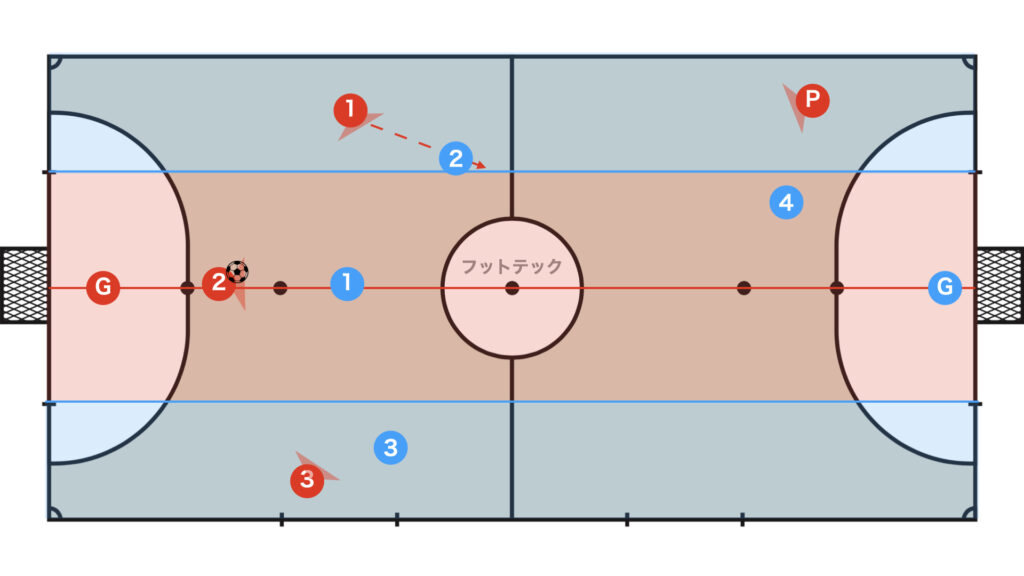
Pivo-ala is frequently used in a 3-1 formation with a false pivo setup, where the pivo drifts to the side, as shown in the figure above.
Formation of the 3-on-line
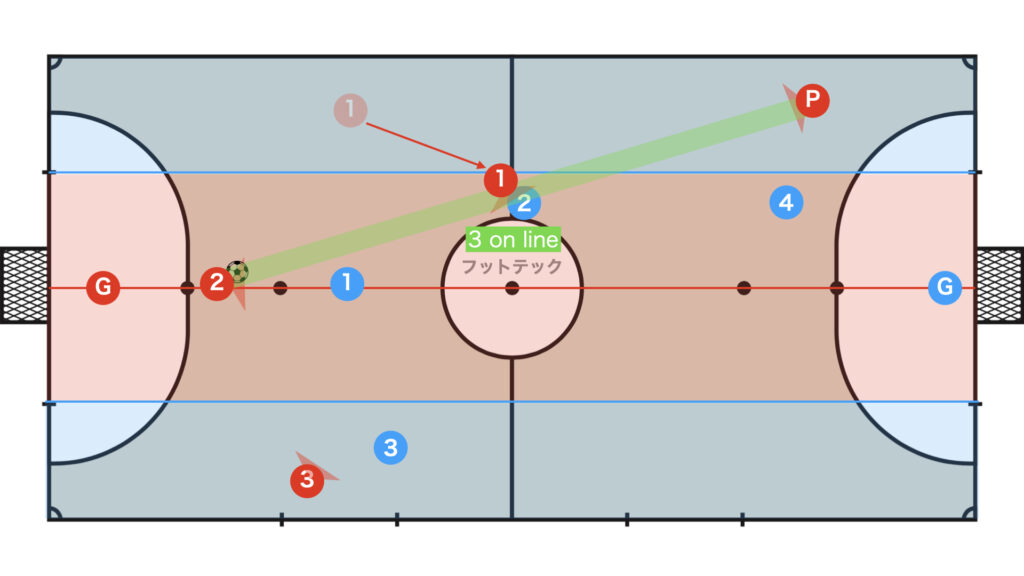
The ala (red number 1) takes up a high position to form the 3-on-line.
Sai: Creating a Passing Lane by Dropping Out
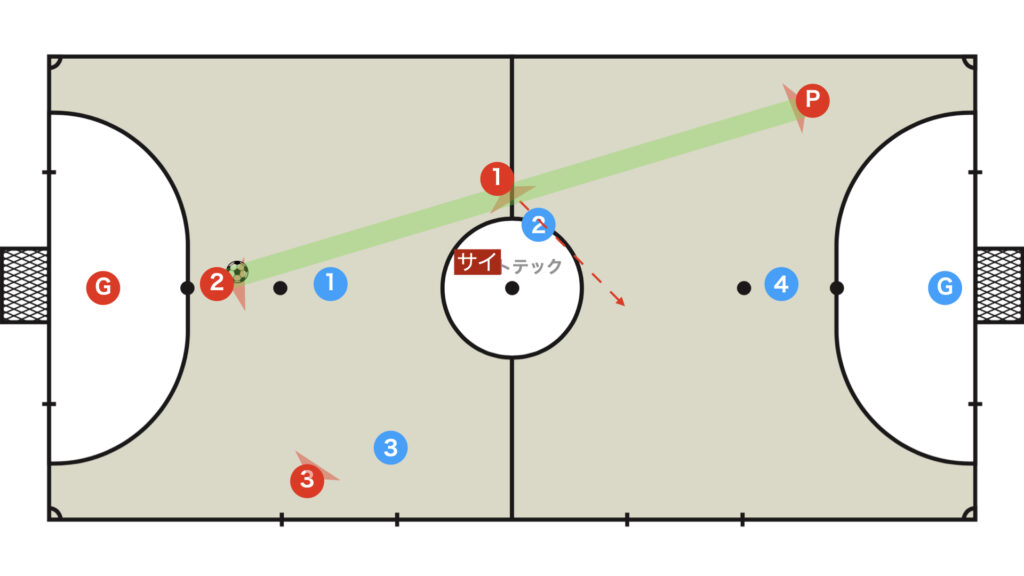
This tactic, where the middle player of the 3-on-line drops out to create a long passing lane, is called “sai.”
Specifically, when the ala executes a sai to create a passing lane to the pivo, it is known as pivo-ala.
Variations in Breaking Down the Defense after a Sai
The Ala Becoming the Third Player
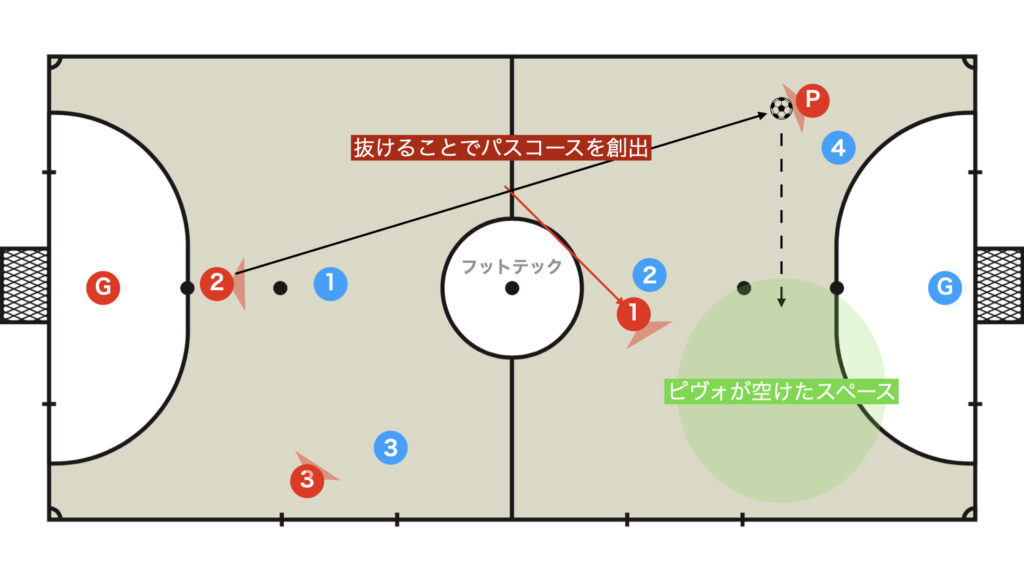
The three-man tactic, in which the ala who has executed the sai receives the ball in the space opened by the pivo and immediately carries it into a shot, is extremely powerful.
Pivo’s Reversal
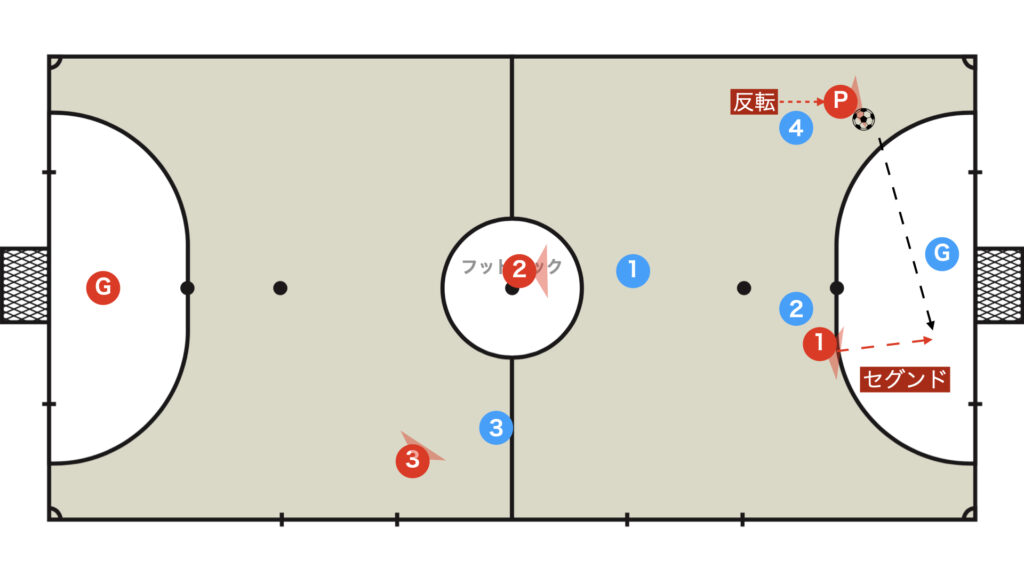
If the opposing defender is wary of the center and is unable to pass to the ala who executed the sai, the pivo’s reversal becomes effective.
Fixo Gets Involved with the Pivo
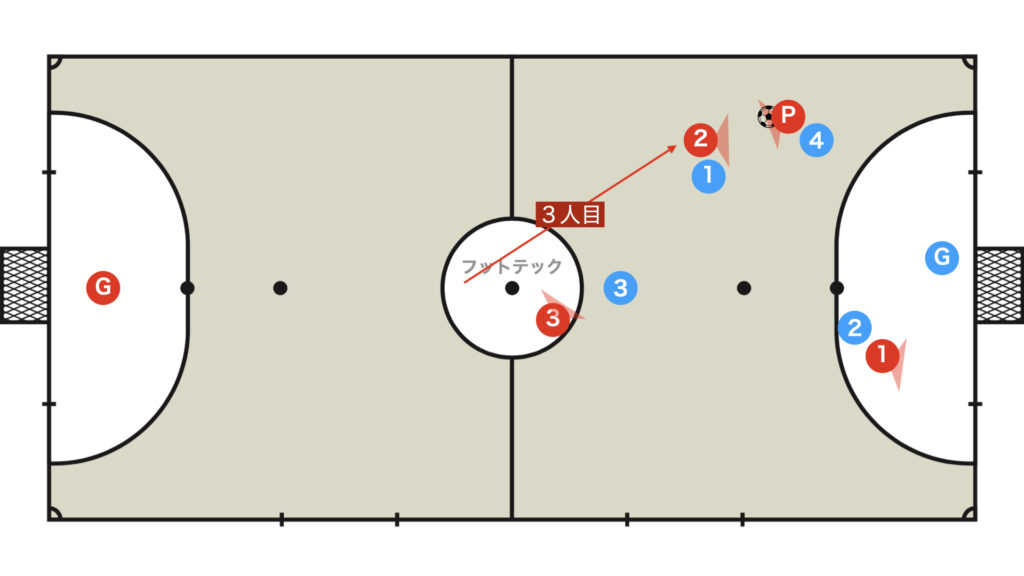
If even a reversal is not possible, then by holding onto the ball, an opportunity is created until the fixo (the third player) gets involved with the pivo.
From here, the variations in breaking down the defense overlap with those of the threesome “L,” so they will be omitted.

Duo
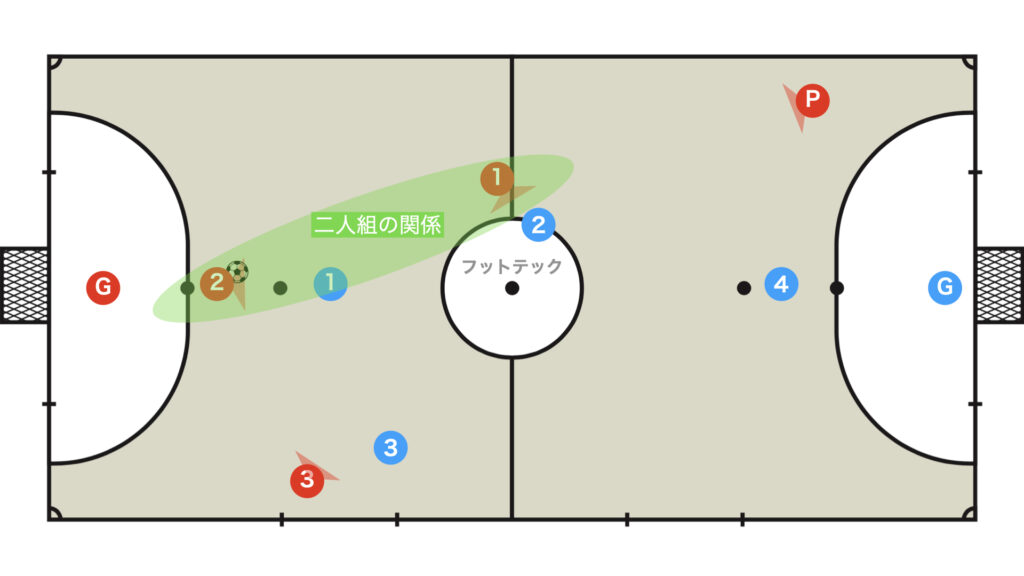
By not merely executing a sai blindly, but also by being aware of the duo relationship between the fixo and the ala, one can flexibly adapt to the opponent’s defensive setup.
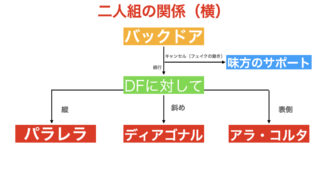
Central Parallera
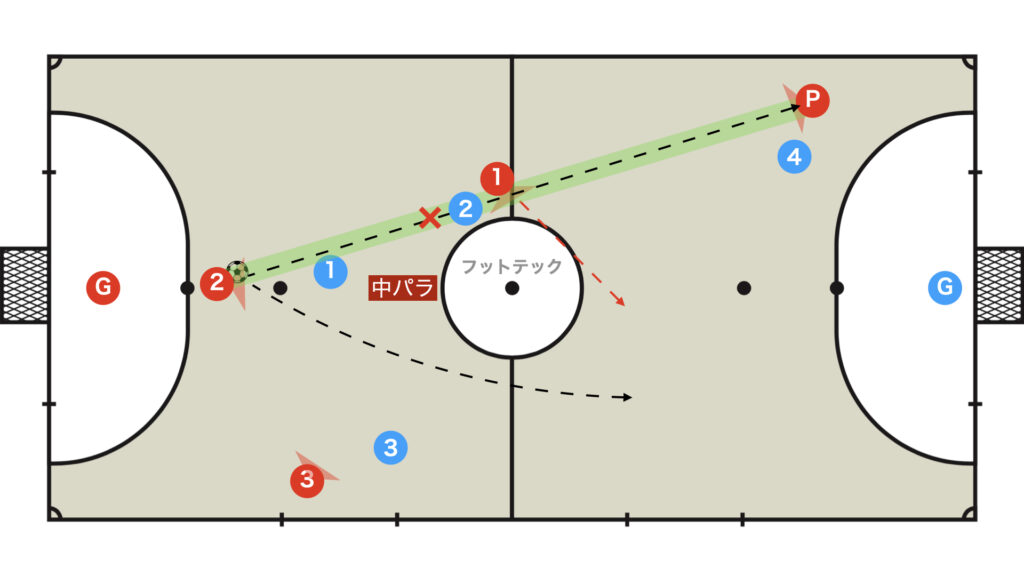
When the opposing defender is wary of the 3-on-line passing lane, space opens up behind them, so aim for a central Parallera (a Parallera in the center lane).
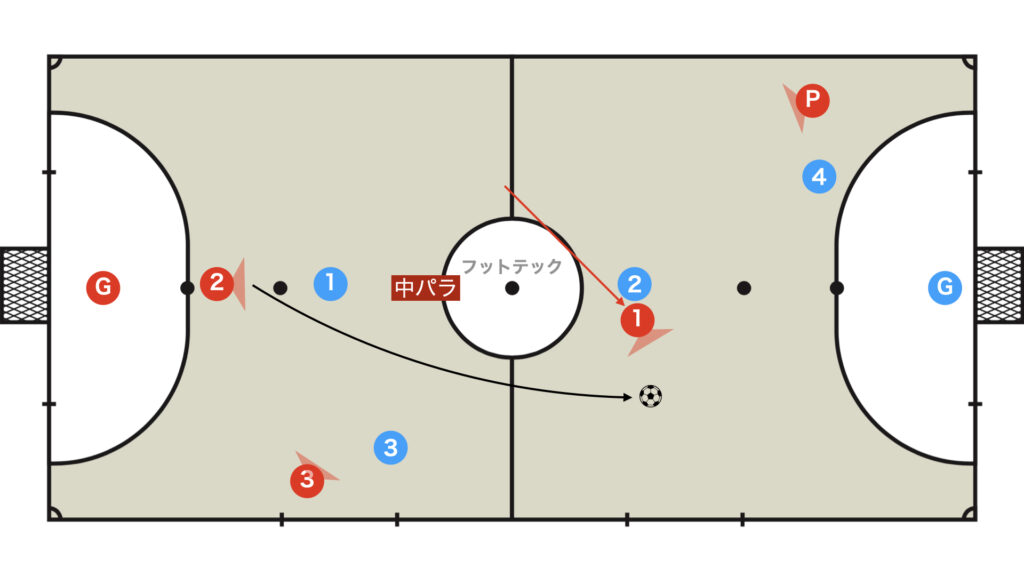
Although this tactic is somewhat challenging in terms of angles, if executed successfully, it can quickly lead to a 1-on-1 situation with the goalkeeper.
Ala Corta
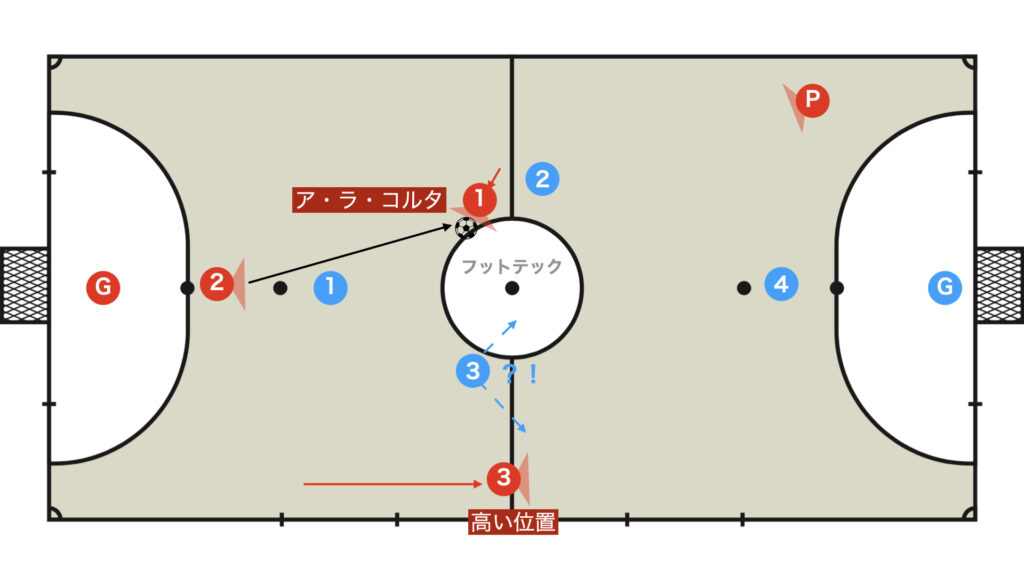
When the opponent blatantly positions themselves behind to guard the passing lane to the pivo, ala colta involves cutting in gracefully towards the center to leave the opposing defender behind.
At this time, the red number 3 on the opposite side can create confusion for the opposing defender (blue number 3) by taking up a high position.
Central One-Two
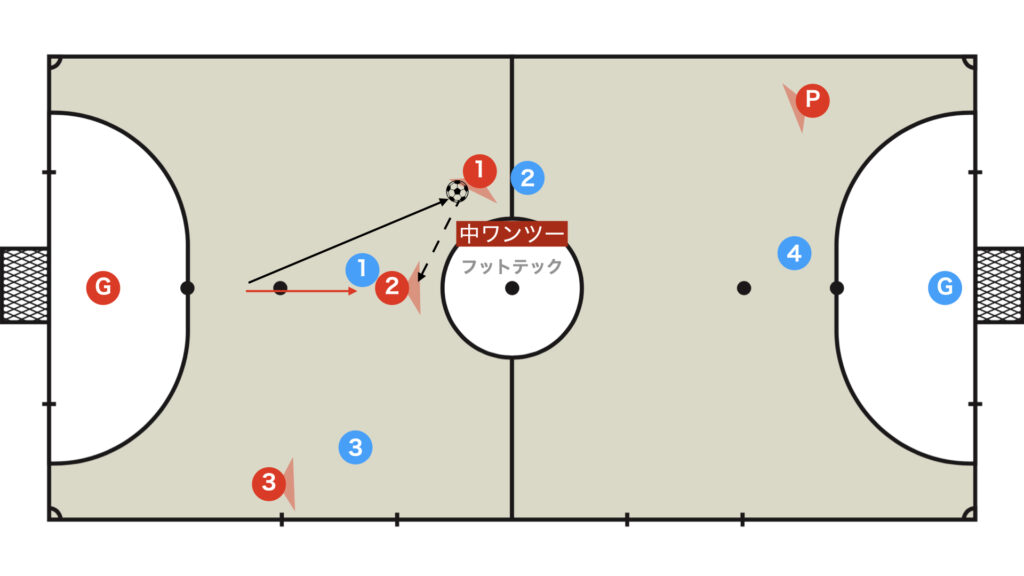
If the fixo is able to target the space behind the opponent, then aim for a central one-two (a one-two in the center lane).
The Pivo’s Backdoor
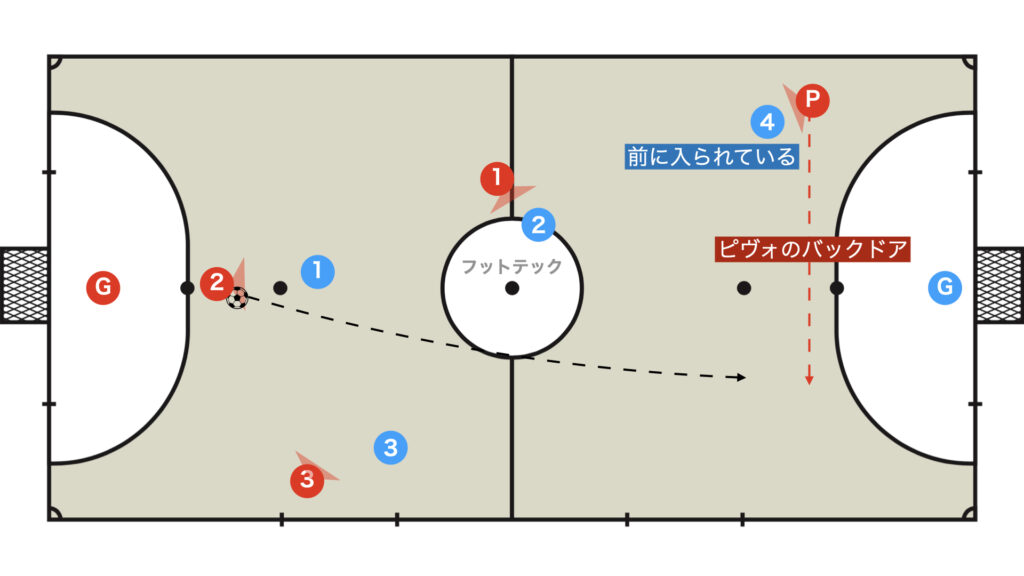
If the opponent’s fixo steps in front of the pivo, it is effective to engage in play behind the opponent and receive the ball via a backdoor pass.
Thank you very much for reading this article to the end.
If you found this article useful, please consider sharing it using the social media share buttons above.
We regularly share valuable insights on futsal tactics on Twitter, so if you haven’t followed us yet, we’d appreciate your support!
We are committed to raising the level of futsal in Japan by sharing high-quality information through discussions with individuals who have coaching experience in the F.League and overseas.
If you have any questions or notice any mistakes, feel free to leave a comment below.
We update our articles regularly, so if you’d like to keep reading, please bookmark our site or search for “FutTech”!
